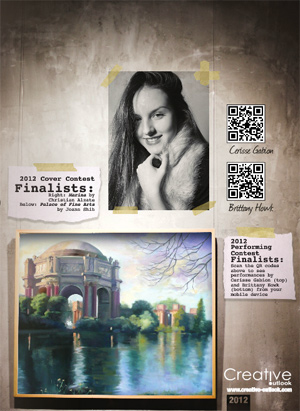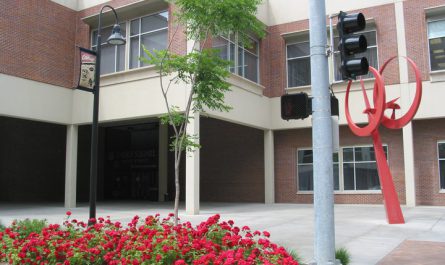By Bruce Maddocks, Director of Foundations, UMass Dartmouth
 Every discipline, every career, has its specialized abilities: those distinct skills that mark its successful practitioners. Every discipline has, as well, a way of molding the more generalized outlook of those who engage in it. For what we do for a living tinkers with our psyches; our jobs emphasize (and in the first place attract) a certain kind of human temperament and they then proceed to confirm its characteristics on an hourly basis. Just as marathon runners and shot-putters will develop unmistakably different physiques, so our livelihoods contribute to the ultimate shape our minds, sorting our priorities and helping us to define what we value. For example, carpentry and forestry – career cousins as they are – might be said to each encourage differing estimations of the virtue of craftsmanship. Likewise, applied and theoretical physicists can often be distinguished by their relative viewpoints on the benefits of imagination.
Every discipline, every career, has its specialized abilities: those distinct skills that mark its successful practitioners. Every discipline has, as well, a way of molding the more generalized outlook of those who engage in it. For what we do for a living tinkers with our psyches; our jobs emphasize (and in the first place attract) a certain kind of human temperament and they then proceed to confirm its characteristics on an hourly basis. Just as marathon runners and shot-putters will develop unmistakably different physiques, so our livelihoods contribute to the ultimate shape our minds, sorting our priorities and helping us to define what we value. For example, carpentry and forestry – career cousins as they are – might be said to each encourage differing estimations of the virtue of craftsmanship. Likewise, applied and theoretical physicists can often be distinguished by their relative viewpoints on the benefits of imagination.
It is probably unnecessary to note that visual artists usually, like carpenters, prize craftsmanship and usually, like theoretical physicists, prize imagination. (We also have a tendency to hold team spirit and logical rigor in comparatively lower esteem – these valuations always cut two ways.) But here is the place to consider a particular outlook inherent to the practice of visual art, one that ought rightly to be better known and better respected by the rest of the human breed. It is the career motivation of enjoyment.
There are any number of reasons why people choose the career paths they do, and only a few of them are outright bad ones (“it’s what my parents wanted” comes to mind – and with a little luck even this can be bearable). Traditionally, though, three motivations are known to predominate: income; purpose; and prestige.
Income is certainly the favorite category. And it is not by itself an evil reason. Some money is a necessary thing and a lot of money is, on balance, at least not much worse than a moderate amount of it. With income, too, comes a sense of reputable worth; it offers proof, in its way, that others appreciate one’s sweat. Others are paying for it, after all.
The second and rival career motivation is that of leading an honorable purpose. Many wise career choices are founded on battling against something awful. Think of fighting disease, think of fighting crime and injustice, or just think of fighting fires. Some of the opportunities that belong in this category do provide a handsome living as well. But some do not; the Peace Corps will not make you rich no matter how long you stay at it.
 The third traditional career motivation is the social standing that certain jobs confer. True, nowadays it is hard to discover a prestige that is distinct from those first two motivations. In our market-powered world, social standing arrives nearly automatically with wealth. And, where it does not, it is usually derived from the honor of one’s purpose. Only a few instances of stand-alone prestige remain. A state governor, for example, will usually earn considerably less than the lobbyists who pound on her door; yet the governor keeps the edge in prestige. A trial judge cannot always take pride in serving greater societal good than some of the non-profit lawyers who enter the courtroom; yet the black robe retains its clout.
The third traditional career motivation is the social standing that certain jobs confer. True, nowadays it is hard to discover a prestige that is distinct from those first two motivations. In our market-powered world, social standing arrives nearly automatically with wealth. And, where it does not, it is usually derived from the honor of one’s purpose. Only a few instances of stand-alone prestige remain. A state governor, for example, will usually earn considerably less than the lobbyists who pound on her door; yet the governor keeps the edge in prestige. A trial judge cannot always take pride in serving greater societal good than some of the non-profit lawyers who enter the courtroom; yet the black robe retains its clout.
In the visual arts, all three of these motivations are to be accounted for. Despite what some people believe, there is fair money to be earned here. Graphic designers, videographers and gaming concept artists, as examples, can rake it in nicely. And artists, too, can accept the uplift of a higher social purpose; many, for example, wage private wars against public ugliness. Prestige, on the other hand, is admittedly not an easy thing for an artist to assume. There is the famous anti-prestige prestige that comes with the artistic stereotype: a rogue’s independence from foolish social conventions. But this is without doubt the flimsiest reason for entering the arts. If hunger doesn’t do away with it, success will. Because all fundamentally smart persons should ignore foolish social conventions, and most working artists have no difficulty in being fundamentally smart persons.
Meanwhile the best reason to enter any field of art is strangely the most rare career motivation of them all: the sheer and immediate delight of doing the work. Our livelihood is our fun. Moreover, without that fun no amount of money or fame or societal benefit could make us tick. The materials, the tools, the creative process – its agonies as well as its triumphs – and naturally the product itself: they all provoke the fascination and even the gratitude of the artist. We would do it for free – we don’t. But we would.
There are just not many others who accept enjoyment as a primary career motivation. Though we are not completely alone. Many of the finest professionals of all fields will stand in agreement. Something intrinsic in what they do appeals to them too, pesters them in a friendly way and engages them in an utterly human way. That very engagement is what makes for their achievements. And perhaps the most instructive example of this principle can be found in the upper reaches of money-making itself.
Please consider the full-scale irony of it. For most workers, money is the classic extrinsic career motivation: it is the after-the-fact reward, not something that has directly to do with any task at hand. But for elite financiers the understanding is commonly a different one. It is the artistic one. To listen to what they say, the best among them share the artist’s brazen demand for the pleasure of the job, and only rarely is straightforward greed compelling. Rather they delight in the game of money and genuinely like doing what needs to be done to win the game. Income, from this viewpoint, becomes a mere unit of score-keeping. Indeed it is not unheard of for entrepreneurs to sell off profitable businesses for the purpose of being able, then, to re-begin the whole process from the ground up. That is to say, they would do it for free. They don’t. But they would.
Does this explain why so many artists are also first-rate businessmen? No. In fact necessity is probably its best explanation. Does it provide insight as to why so many wealthy people collect art? Perhaps – but it is typically a rich person’s hobby to start with. In any case what remains hardest to understand is why so many people, given free choice, elect to spend the prime hours of their lives doing something they do not particularly enjoy. Whatever they are, they are not artists.
 About University of Massachusetts Dartmouth:
About University of Massachusetts Dartmouth:The University of Massachusetts Dartmouth distinguishes itself as a vibrant public university actively engaged in personalized teaching and innovative research, and acting as an intellectual catalyst for regional and global economic, social, and cultural development.
Learn more: University of Massachusetts Dartmouth MyMajors school page | University of Massachusetts Dartmouth Admissions Website | Get Matched Now!



